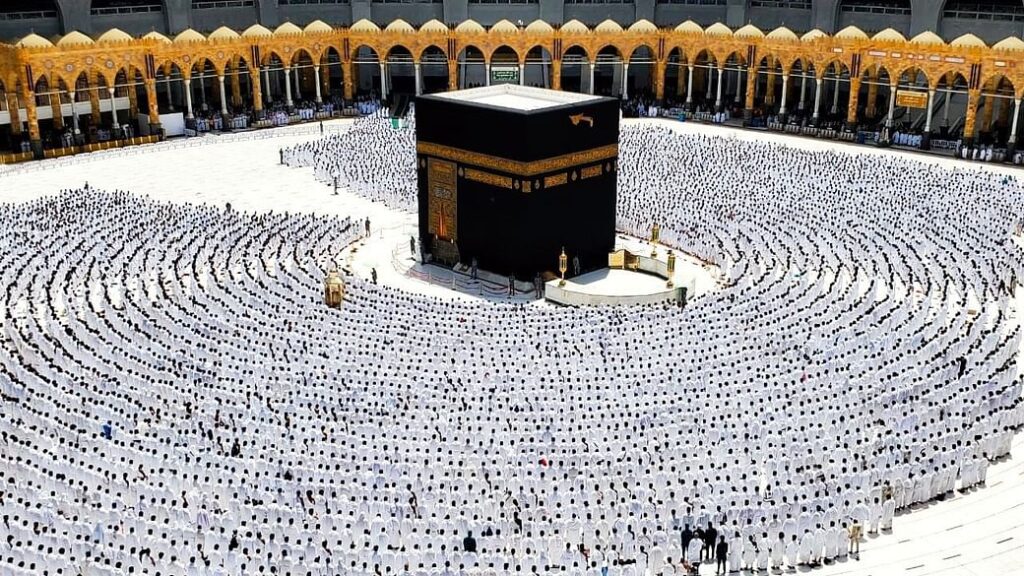
tasks of crowd management involve organizing and directing individuals in a safe and organized manner during large events and occasions where a significant number of people gather. Among these events are Umrah and Hajj. When worshippers and pilgrims from all over the world come to the Masjid al-Haram and Mecca to perform the Hajj obligation, crowd management takes into account traffic control, providing basic services to pilgrims and worshippers, and ensuring their safety and security.
The importance of crowd management during large events and occasions such as Hajj and Umrah includes providing a safe environment for everyone and ensuring that no accidents or suffocation occurs in the area. Crowd management also enhances the experience of pilgrims and worshippers by providing them with the necessary services and facilitating the performance of their obligations with ease. In this article, we will review the tasks of crowd management in the Masjid al-Haram and during Hajj and how to provide a safe and organized environment for everyone.
Situation analysis
Managing crowds in the Masjid al-Haram, Hajj, and Umrah poses a major challenge for the authorities responsible for organizing these holy places. In the Masjid al-Haram, millions of worshippers gather during the five daily prayers, in addition to pilgrims and visitors during the Umrah and Hajj seasons, where the number of pilgrims visiting Mecca during the Hajj season exceeds several million.
Therefore, managing crowds in these holy places requires determining prayer areas and ensuring the provision of basic services for pilgrims and worshippers, such as water, ventilation, and bathrooms, as well as reducing the likelihood of accidents in the area. Among the challenges faced by crowd management in these places are overcrowding, pushing, and ensuring the implementation of health and preventive measures.
Managing crowds in the Masjid al-Haram, Hajj, and Umrah requires coordination and cooperation between the responsible authorities, including the Royal Commission for Mecca and other government and security agencies. Managing crowds in these holy places also requires the use of modern technologies and artificial intelligence in organizing and managing crowd movement in a safe and efficient manner.
Tasks of Crowd Management
Managing the crowds of the Holy Mosque and the Hajj requires special skills and expertise due to the huge numbers of worshippers and pilgrims. The main tasks of crowd management during these occasions include:
• Organizing movement and traffic flow: Crowd management must coordinate with relevant authorities to organize traffic flow inside and outside the Holy Mosque, ensuring that crowds flow safely and in an organized manner, controlling pedestrian and vehicle traffic and ensuring that no congestion or crowding occurs.
• Providing basic services: Crowd management must provide basic services to pilgrims and worshippers, such as toilets, water, food, first aid, lighting, ventilation, and cooling.
• Organizing prayers and worship: Crowd management must organize the prayers of worshippers and guide them to perform worship in a correct and safe manner, ensuring that no congestion or crowding occurs in areas designated for prayer.
• Supervising the security and safety of pilgrims: Crowd management must cooperate with security and health authorities to provide security and safety for pilgrims, ensuring that no accidents or disasters occur and coordinating with relevant authorities in case of emergency.
• Communicating and cooperating with pilgrims: Crowd management must communicate and cooperate with pilgrims and worshippers, providing assistance and support, meeting their needs and requirements, and improving their services and experiences.
Crowd management techniques
Managing the crowds of the Holy Mosque and the Hajj requires special skills and expertise due to the huge numbers of worshippers and pilgrims. The main tasks of crowd management during these occasions include:
• Organizing movement and traffic flow: Crowd management must coordinate with relevant authorities to organize traffic flow inside and outside the Holy Mosque, ensuring that crowds flow safely and in an organized manner, controlling pedestrian and vehicle traffic and ensuring that no congestion or crowding occurs.
• Providing basic services: Crowd management must provide basic services to pilgrims and worshippers, such as toilets, water, food, first aid, lighting, ventilation, and cooling.
• Organizing prayers and worship: Crowd management must organize the prayers of worshippers and guide them to perform worship in a correct and safe manner, ensuring that no congestion or crowding occurs in areas designated for prayer.
• Supervising the security and safety of pilgrims: Crowd management must cooperate with security and health authorities to provide security and safety for pilgrims, ensuring that no accidents or disasters occur and coordinating with relevant authorities in case of emergency.
• Communicating and cooperating with pilgrims: Crowd management must communicate and cooperate with pilgrims and worshippers, providing assistance and support, meeting their needs and requirements, and improving their services and experiences.
tasks of crowd management at the Masjid al-Haram and during Hajj is a vital and sensitive matter, which requires the use of modern and advanced technologies to facilitate procedures, control crowds, and ensure the safety and security of pilgrims and visitors.
Thanks to advanced technologies such as automated control systems, smart applications, security and safety systems, the Hajj experience can be improved, made smoother, easier, and safer.
It is important to effectively and coordinately employ these technologies to achieve the desired purpose and ensure a unique and safe Hajj experience for everyone.